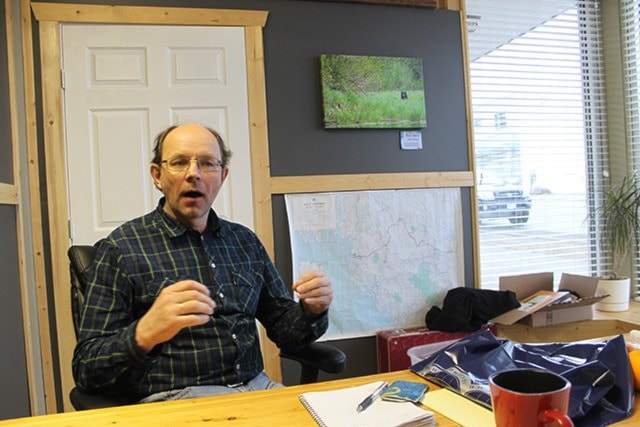A group of Russian scientists and conservationists are on a speaking tour this week, which includes a stop in Terrace tomorrow night, about the dangers that LNG projects pose to local salmon.
One of team, conservationist Dmitry V. Lisitsyn, says the Sakhalin LNG project, which was built and owned by Shell and Gazprom near his hometown on the east coast of Russia, says the end results of the development were much different than promised in the environmental plan, causing the collapse of pink salmon and also of other sea life after it opened in 2009.
The group was brought over by Terrace-based SkeenaWild Conservation Trust, and conservationist Lisitsyn has a similar position with Sakhalin Environment Watch as does SkeenaWild executive director Greg Knox in Terrace.
He says that by comparison, the Pacific NorthWest LNG project planned for Lelu Island near Prince Rupert is about twice the size of the Sakhalin one.
He also said Sakhalin has small rivers near the plant, as opposed to one big one like here.
“There was a very big difference between what they predicted, and what occurred,” he said of when the Sakhalin project was okayed in the planning phases by the Russian government.
Based on similarities between the two projects and their locations, Lisitsyn believes the region should expect a large impact on the salmon runs from having a plant built in the estuary at the mouth of the Skeena River.
“I don’t have a problem with LNG technology,” he said. “What I have a problem with is putting the plants in locations like these.”
In the ocean itself, it is the dredging that must be done, noise and light pollution from flare stacks that affects marine life, he said.
The pipelines feeding gas plants cause silt to collect in the areas where the salmon lay their eggs, he said.
“I am surprised there isn’t more concern in your area about the pipelines,” said Lisitsyn.
He said Shell and Gazprom proceeded with construction of Sakhalin LNG without heeding many of the conditions laid down by Russian environmental authorities.
He said the shortening of the jetty design at a late stage in planning meant more dredging, followed by court challenges against the company for dumping dredged material in the bay.
He said the difference between the rich and poor is greater now after the oil and gas boom on his island, and his environmental group can’t afford to rent a space large enough for its purposes.
During construction, about 60-70 per cent of the work force were foreign workers, he added, and now, during operations, fewer than 100 are employed.
The lecture is being held tomorrow, Feb. 16 at the Elks Hall from 7 p.m. to 9 p.m.
